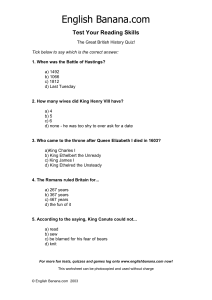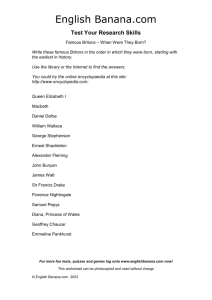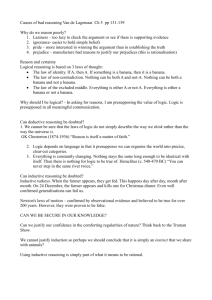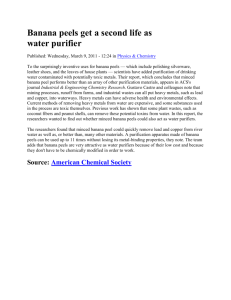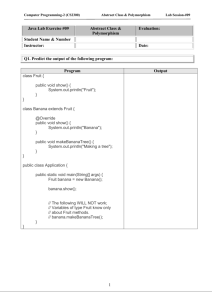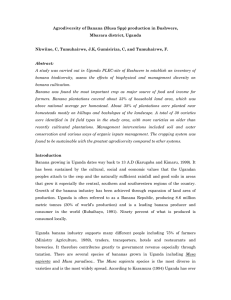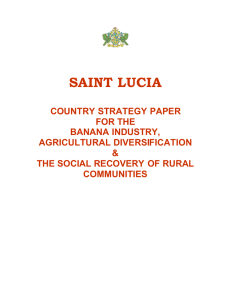Banana Republics ppt
advertisement
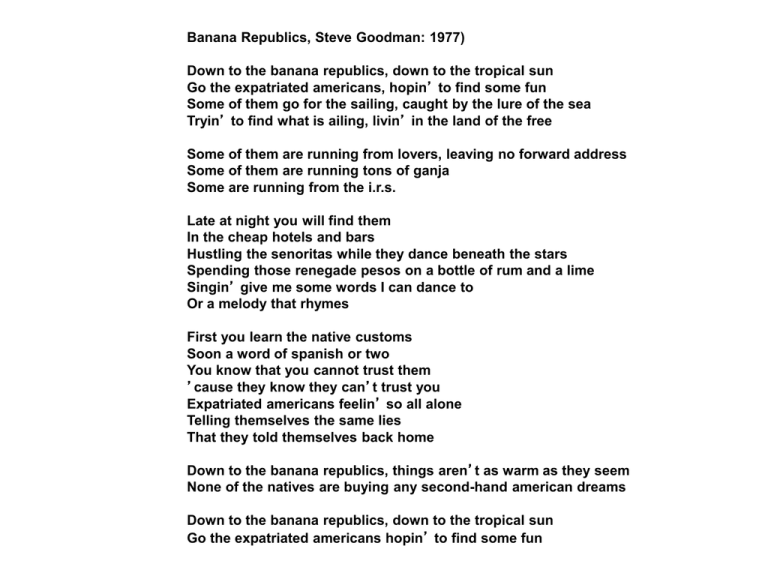
Banana Republics, Steve Goodman: 1977) Down to the banana republics, down to the tropical sun Go the expatriated americans, hopin’ to find some fun Some of them go for the sailing, caught by the lure of the sea Tryin’ to find what is ailing, livin’ in the land of the free Some of them are running from lovers, leaving no forward address Some of them are running tons of ganja Some are running from the i.r.s. Late at night you will find them In the cheap hotels and bars Hustling the senoritas while they dance beneath the stars Spending those renegade pesos on a bottle of rum and a lime Singin’ give me some words I can dance to Or a melody that rhymes First you learn the native customs Soon a word of spanish or two You know that you cannot trust them ’cause they know they can’t trust you Expatriated americans feelin’ so all alone Telling themselves the same lies That they told themselves back home Down to the banana republics, things aren’t as warm as they seem None of the natives are buying any second-hand american dreams Down to the banana republics, down to the tropical sun Go the expatriated americans hopin’ to find some fun I took the previous picture while I was in Panama investigating how the government there is restoring past colonial landscapes, like this Jesuit mission where teenagers learn about architectural restoration. While poking around the site I stumbled on this statue. Upon reading the plaque, I made an immediate connection. Berlanga was the Spanish friar who, in 1535, described Panama as a "cueva de ladrones e sepultura de peligrinos" [den of thieves and sepulchre of pilgrims. In 2010, I didn’t think it was so bad. Berlanga also was an early promoter of an interoceanic canal. I didn’t know that he “discovered” the Galapagos Islands or, more importantly, introduced banana cultivation to the Caribbean and Central America. It makes sense. Religious orders in colonial Latin America also functioned as agricultural researchers. Don’t be misled, however, Berlanga did not introduce plantation production of bananas. North Americans did. This map illustrates Costa Rica’s leading banana plantation regions situated along the historical Atlantic Railroad path (HIGH-LIGHTED IN YELLOW). Minor Keith is largely responsible for establishing this agricultural region and transportation corridor. These railroads were largely built by fruit companies. As you can see, the fruit companies’ railroads coincide with their productions areas. This is a photograph I took while riding on the fruit company train from San Pedro Sula to Puerto Cortes, Honduras. The previous two slides show the geographic distribution of Central America’s railroads. They were funded by the fruit companies and limited almost exclusively to banana-producing regions. While the fruit companies built impressive infrastructure, isolated communities in the interior of Central America are served by basic infrastructure like this hanging bridge, locally called a “hamaca”. What season? In invierno this river crossing often requires a long wait until runoff flows through and the water level decreases. Your old school bus might have found a second career as public transportation in a Banana Republic. Banana plantation in Honduras’ Aguan Valley. This is what monoculture looks like. This another monoculture in the Aguan Valley that is displacing increasing amounts of banana lands in Central America. What is the crop? The crop is Palma Africana or African oil palm, so named because it is native to southwest Africa. The bill board advertises a processing where small growers can sell their harvests for “pago inmediato” [immediate payment]. Oil palm plantations as far as the eye can see on former banana lands see near the mouth of the Rio Aguan, Honduras. The oil from the African Palm Oil is used primarily in processed foods and skin products: Palmolive. During the past decade producers of the oil have found a growing market for the oil for use as biodiesel. Oil palm fruits This palmero is going to have to fix that tire to get his pago inmediato, Trujillo, Honduras.


